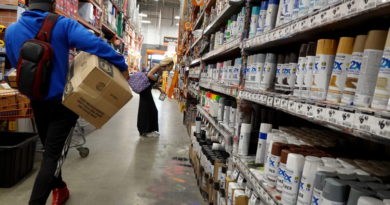How practicing persistence can boost your happiness, productivity, and energy
Sometimes it is practicing patience that pays off—patience with ourselves and patience with process. Think back on your own life, and you’ll likely find your own great reminder, but for me, it was a high school experience as a “least likely” member of the school’s track-and-field team.
I was never a sporty kid; in fact, I was typically the last to be chosen for teams during recess or after school. But in high school I signed up to do discus, javelin, and shot put. I wasn’t a particularly promising competitor, but I liked throwing the discus: the spin, staying in the circle, throwing, the angle of the discus, how it released off my fingers. The art teacher, Mr. Wade, ran the discus event because he had thrown as a child, and when I asked for help, he agreed to show me some mechanics of throwing.
I’m the type of person who never gets things the first time, or even the tenth time. I need to see things over and over for them to lock in. But he was patient with me, and I realize now, years later, that he was in effect teaching me to be patient with myself and focus on the process.
It amazed me at the time that I could make small adjustments and see myself improve, and when the day came for the big competition, I placed second in my school, which qualified me to compete in the all-city track-and-field meet, where I placed third with a personal-best throw. I was elated, but the most important thing I learned—a lasting life lesson— was to trust the process. For example, I learned recently that the positive stimuli I was getting from learning a particular way—reinforcement learning—was what made practice feel good. I also learned that habit formation is more responsive to context than to goals. The more positive cues (including dopamine rewards) you get to practice a behavior, the more likely you are to do it and the more likely that the practiced behavior will become a habit. For instance, early survival in humans involved locating environments where food is found, which leads to dopamine production. I was able to create new habits to be productive, delivering dopamine in the context of work.
To reap energy from practicing, it helps to uncover insights about single steps we might experiment with to improve or grow in what we are trying to achieve. Several years ago, inspired by my wife Jessica’s physical flexibility, I wondered if I had a similar potential. So with curiosity as my lead, every few days I would try to touch my toes. I would stretch as far as I could go and count quickly to thirty. Then I started counting to thirty and then back to one. When I started, I could barely reach past my knees. But I kept practicing that simple movement, eventually doing it once a day easily while I waited for something to heat in the microwave. My reach got better and better, and the practice became easier. A couple months in, I could touch my toes—it felt great! I craved doing the stretch all the time. What impressed me most wasn’t my newfound flexibility, though I felt good about achieving my goal; it was that something so simple and perhaps inconsequential could have captured my imagination and commitment. That felt great, too. (And at my next yearly physical, my doctor announced that I’d grown half an inch!)
Research points to the power of motivation to boost the brain’s response to anything. Motivation lowers activation energy, the amount of energy it takes to begin a task, and boosts overall energy, enhancing the rewards of your effort. The brawny brain becomes a happier brain, too. Try these boosters:
Socialize it
If practicing alone seems daunting, engage your “social brain” to boost your motivation and rewards. We are a social species. Practice with a friend or a group—just get the first session onto your calendar and lower the activation energy for the rest to fall into place. The presence of others whose energy and attitude are a good fit for you will register as positive, supportive, and encouraging.
If you relish competitive energy or a drill sergeant approach, then seek out a group or a person who will energize you that way. If you feel you’re slipping into a rut with practice, revive by connecting with someone who has more skill or by changing your work environment.
There are now all kinds of in-person co-working spaces and online co-working rooms where you can get together with strangers, quickly share your goals for the next hour or two, work, and then meet back at the end to discuss what you’ve achieved.
Courtesy of HarperCollinsPublishers
Use inspiration to ignite motivation
Turn to media to draw inspiration and insights from others. Documentaries about musicians, artists, and athletes often reveal their practice process, and witnessing that level of passion and commitment can energize your own. The documentary Running the Sahara, chronicling three men who ran more than 4,300 miles across the desert to raise consciousness (and money) for a clean water initiative in Africa, put the challenges I face on a daily basis into a completely different light. Surprisingly, it gave me a sense of empowerment to see what was possible for human potential—and how much further I could go, how much more potential I could extract in myself. Inspiration is a great example of lit energy transfer.
Tune in to forward-looking confidence to energize connection and impact
Limitless potential, joy, liberation, and fulfillment await us, but they often feel out of reach until we take the first step. Other rewards of progressing toward long-term goals include connection with others and confidence that we can do something more beneficial for ourselves and/or our community. As we develop skills, we discover our ability to mentor others and harness the lit principle of energy transfer to bolster their efforts and our own. This synergism builds more confidence that we can practice when developing a new or different skill.
Break free from others’ expectations and engage the pleasures of practice
Our education system generally teaches us that practice is something taught and enforced by others, with the goal of mastering skills to meet expectations. When my family moved near a public golf course, I tried to improve my game but quickly plateaued, and practice became frustrating and futile. I realized that I needed a strategy to keep my interest up, so I watched videos online that focused on a specific part of a swing, then went and practiced it on the driving range. I felt the change immediately. My feel of the swing would change, or the ball flight or distance would change, depending on what I’d chosen to focus on. Suddenly practice was pleasurable because I was the one directing my growth, and I was proud of my progress. Others’ expectations aside, it’s up to us to reframe our expectations of ourselves, rewire our brain to own the challenge and the liberation that come with it.
Use group momentum to boost your own
A group practice can push your limits and have you feel part of something beyond yourself. Jessica and I take Djembe drumming classes together, in a drum circle with others. Our instructor, Alan Tauber, says that all you need to do is show up, relax, and play. Amazingly, he has us play complex pieces we couldn’t imagine we’d be able to play when we walked in. But we start together, and, however imperfect, it quickly sounds great as people make adjustments. Even if you can’t play all the notes, you can play many of them, and you can hear the sound of your drum and that of others and the harmony. We always leave surprised—and all we need to do is show up!
Savor peace from mind in the practice moment
Practicing for a period of time helps reduce the distracted or transactional nature of the mind—the worries, anxieties, desire to accomplish something, or other intrusive thoughts that dog us throughout the day. Practice can be meditative, such as folding laundry or doing dishes. Focus your attention on this aspect of repetition to leave the rest behind.
Adapted from LIT: Use Nature’s Playbook to Energize Your Brain, Spark Ideas, and Ignite Action by Jeff Karp, PhD, published by William Morrow. Copyright © 2024 by Jeffrey Michael Karp. Reprinted courtesy of HarperCollinsPublishers.



